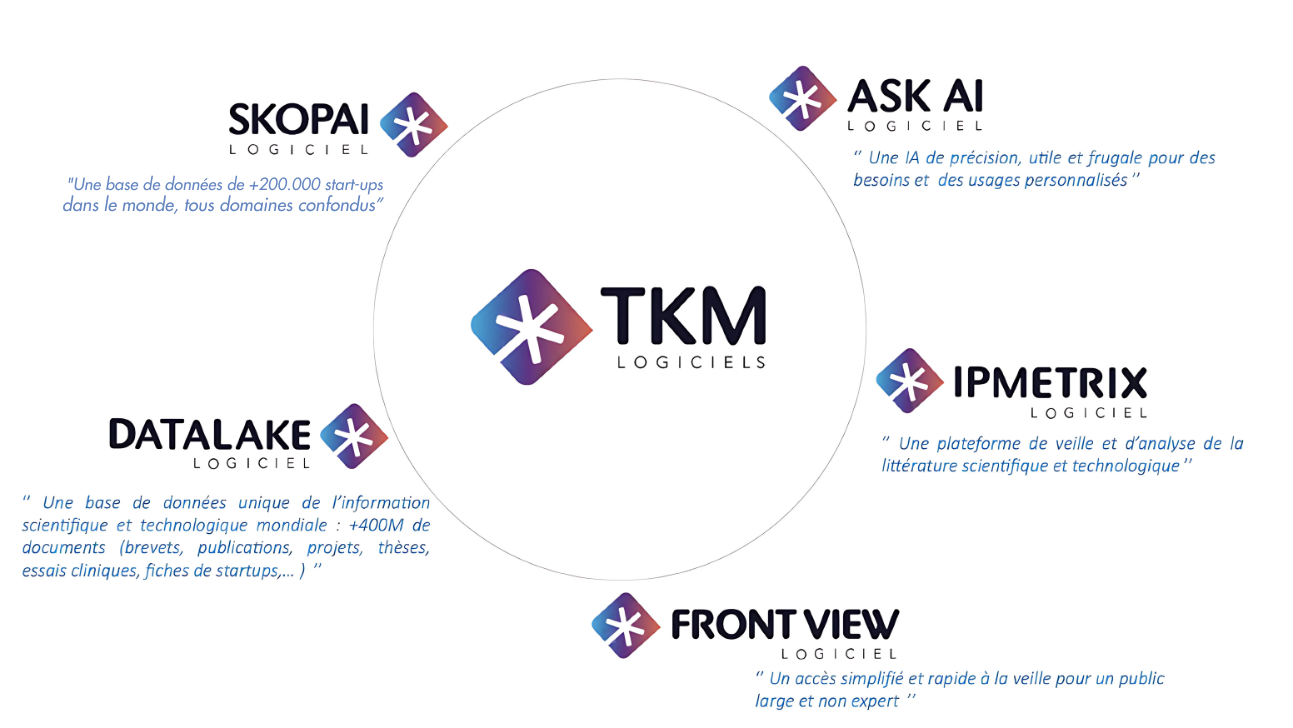Technological diversification and identifying new markets are similar to exploring new territories. Sometimes you can venture into unknown regions, with the possibility of discovering hidden treasures. Other times, you can find safer paths by exploring already known but under-exploited locations. To finish exploiting the cartographic metaphor... just as you can go there "at random", or use a paper map or even a state-of-the-art GPS, you have a multitude of means and tools to best manage your technological diversification. Let's try to see it more clearly.
 UNDERSTANDING THE TECHNOLOGY DIVERSIFICATION STRATEGY
UNDERSTANDING THE TECHNOLOGY DIVERSIFICATION STRATEGY
Technological diversification can be defined as the process by which a company expands its technological portfolio . It can achieve this by developing new technologies itself or by adapting existing technologies to new uses. objectives of a technological diversification strategy are, for example, to increase competitiveness , reduce risks or seize new market opportunities .
The advantages of technological diversification are numerous. For example, a technology company that diversifies its portfolio may be more resilient to market changes . It can also exploit new growth opportunities by identifying and entering new markets. According to a McKinsey study, companies that diversify their technology portfolio tend to achieve 15% higher revenue growth than companies that don't adopt this strategy.
However, technological diversification also presents challenges. Time and resources must , and it is not always guaranteed that these efforts will bear fruit. Additionally, managing a diverse technology portfolio can be complex and requires in-depth technical and business expertise.
 EXAMPLES OF TECHNOLOGICAL DIVERSIFICATION
EXAMPLES OF TECHNOLOGICAL DIVERSIFICATION
Some of the most famous companies owe their success largely to the identification of key technologies.
Apple and financial services
The Apple company is known for its iconic products such as the iPhone, iPad and MacBook. However, Apple also launched Apple Pay , a mobile payment system that allows users to pay for purchases with their iPhone or Apple Watch. This initiative allowed Apple to enter the financial services market and offer a convenient and secure payment solution.
Amazon and home automation
The e-commerce giant is an excellent example of technological diversification. In addition to its main online sales business, Amazon has diversified its offerings by launching products such as Echo connected speakers with the Alexa . This diversification has allowed it to establish itself in the emerging market of virtual assistants and to develop complementary services such as home automation and music streaming .
Tesla stores energy
Tesla is primarily known for its high-end electric cars. However, the company has also diversified its business by offering energy storage solutions through its Powerwall . The Powerwall is a home battery that allows solar energy to be stored and used later, driving the adoption of renewable energy and providing new opportunities in the residential energy market .
Samsung in Health
A global leader in consumer electronics, Samsung has also embraced technological diversification. In addition to its TVs, smartphones and home appliances, Samsung has invested in the health sector by launching products such as smartwatches , which monitor physical activity and provide health data to users. This diversification allows Samsung to reach a wider audience and capitalize on growing health and wellness trends .
Google invests in Artificial Intelligence
Google, famous for its search engine and online services, has diversified its business by investing in areas such as artificial intelligence (AI) and virtual reality (VR). For example, Google developed Google Assistant , an advanced AI that responds to voice commands and provides a personalized user experience. Additionally, Google launched Google Cardboard , an affordable virtual reality device that allows users to immerse themselves in immersive experiences . These technological diversification initiatives allow Google to position itself as a key player in the emerging fields of AI and VR .
These examples illustrate how world-renowned companies have successfully diversified by investing in new technology markets, allowing them to remain competitive and continue to grow . Technological diversification provides businesses with the opportunity to explore new opportunities, expand their portfolio of products and services, and respond to changing consumer needs .
 CLASSIC METHODOLOGIES TO IDENTIFY NEW MARKETS
CLASSIC METHODOLOGIES TO IDENTIFY NEW MARKETS
Identifying new markets through technological diversification is a process that involves research, analysis and evaluation of many factors . These factors include emerging technology trends , unmet consumer needs , untapped market opportunities , and gaps in current market offerings .
One of the main tools used in this process is technology analysis . This involves understanding existing and emerging technologies, their potential applications and their impact on industries and markets. Methodologies such as SWOT analysis (strengths, weaknesses, opportunities, threats) and PESTEL analysis (political, economic, socio-cultural, technological, environmental, legal) can also be used to assess the potential of a technology on a new walk.
Take the automobile industry as an example . At the start of the 21st century , automobile manufacturers identified an opportunity for technological diversification electric vehicle technology . They analyzed the market, identified emerging technology trends and understood the potential of this technology. Today, the electric vehicle industry is estimated to be worth over $160 billion and is expected to reach $802.81 billion by 2027 .
 TOOLS FOR IDENTIFYING NEW MARKETS: TKM & TKM SOFTWARE
TOOLS FOR IDENTIFYING NEW MARKETS: TKM & TKM SOFTWARE
In the process of identifying new markets for technological diversification, our tools may surprise you. Developed by TKM , these software programs offer a whole range of features that can help your company diversify its technologies:

Analysis of a technological landscape
With our software such as Front View, IPMetrix or Skopai, it is possible to carry out a detailed analysis of a technological landscape, identifying new technologies, emerging trends and potential competitors . This can help your company identify new opportunities for technological diversification.
Competitive Monitoring
By monitoring competitor patents , IPMetrix can provide valuable insights into new technologies competitors are developing. This allows you to anticipate your competitors' moves and adjust your diversification strategy accordingly.
Technology assessment
IPMetrix can help assess the value and viability of new technologies . This is a valuable decision aid whether you should invest in developing these technologies or seek to acquire them through licensing or acquisition .
Patent risk management
By performing a Freedom To Operate (FTO) analysis identify potential risks related to patent infringement . This can help a company avoid costly legal battles and diversify its technology more safely.
Patent strategy
IPMetrix can help develop an effective patent strategy, identifying technologies to patent and relevant regions to file patents in . This can protect the company's investments in technology diversification and increase the value of its patent portfolio .
Future challenges of technological diversification
Tomorrow, technological diversification will continue to be a key factor in the success and growth of businesses. In an era of rapid innovation and fierce competition, the ability to adapt and innovate using existing technologies to enter new markets remains a key strategic advantage .
As information technology and AI evolve, technological information management and the ability to identify weak signals in a sea of information will be increasingly important . Tools like IPMetrix , developed by TKM, can play a crucial role in this process by helping companies exploit available information to identify opportunities for technological diversification .
Technological diversification is more than just a business strategy. It's a necessity to survive and thrive in today's business landscape . As we move toward an increasingly technological future, businesses will need to continue to adopt, adapt and innovate with diverse technologies to identify and capture new markets.
 UNDERSTANDING THE TECHNOLOGY DIVERSIFICATION STRATEGY
UNDERSTANDING THE TECHNOLOGY DIVERSIFICATION STRATEGY
 EXAMPLES OF TECHNOLOGICAL DIVERSIFICATION
EXAMPLES OF TECHNOLOGICAL DIVERSIFICATION
 CLASSIC METHODOLOGIES TO IDENTIFY NEW MARKETS
CLASSIC METHODOLOGIES TO IDENTIFY NEW MARKETS TOOLS FOR IDENTIFYING NEW MARKETS: TKM & TKM SOFTWARE
TOOLS FOR IDENTIFYING NEW MARKETS: TKM & TKM SOFTWARE
